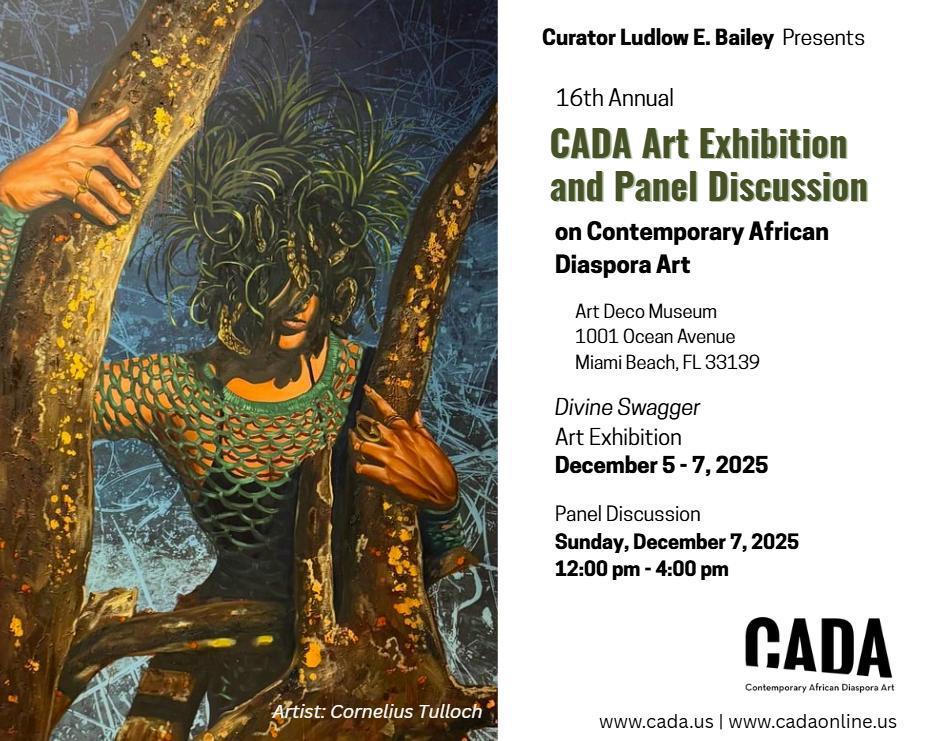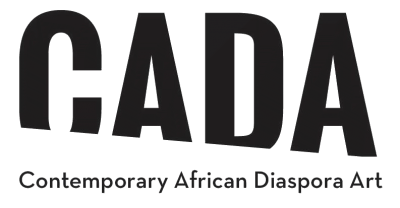
Divine Swagger: Portraits of Power, Rhythm and Remembrance
By Ludlow E. Bailey,
Global Curator of African Diaspora Art
Black survival is not merely a historical fact—it is a spiritual performance. It is rhythm and resistance, elegance and endurance. It is what I call Divine Swagger: the radiant cultural force that has animated the global Black experience for over five centuries and continues to manifest in breathtaking forms of creativity, innovation, and style.
This exhibition, Divine Swagger: Portraits of Power, Rhythm and Remembrance, is a curatorial offering—a sacred archive of visual declarations—by some of the most brilliant artists from across the African Diaspora. Their works are prayers in pigment, testaments to survival, and declarations of dignity. They portray what it means to carry ancestral memory and Black excellence with flair, grace, and radical imagination.
Aesthetic Power Rooted in Struggle and Spirit
As a global African curator, my curatorial practice centers on revealing and honoring the metaphysical and spiritual infrastructure of Black culture. The aesthetic power we showcase in this exhibition is not incidental. It is forged in the fire of trauma and shaped by the hands of transcendence.
Black people across the globe have endured unspeakable violence—500 years of slavery, colonialism, racial terror, segregation, apartheid, mass incarceration, and systemic erasure. And yet, out of these ashes, we have emerged with an aesthetic that is not just beautiful but sacred. Our art is memory, prophecy, and a reclaiming of agency.
The selected artists in Divine Swagger reflect this spiritual magnitude. They come from Haiti, Nigeria, and the United States. They come with rhythm in their brushstrokes, remembrance in their symbols, and power in their portraits. Each artist in this exhibition contributes to a larger project—the renaissance of the global Black imagination.
Artists as Healers, Historians, and Heralds
Vanessa Charlot, a Haitian-American photographer and scholar, captures the intimate textures of Black life and resistance. Her lens is both documentary and devotional. She reminds us that the personal is political, and that within the stillness of Black portraiture lies deep, ancestral knowing.
Maxwell Pearce, an African American artist and activist, channels kinetic energy through form and color. A former professional athlete, his work explores Black masculinity, resilience, and cultural agency with boldness and honesty. His portraits are about presence—the audacious right to be seen and celebrated.
Olumide Oresegun, the Nigerian master of hyperrealism, offers meditative, water-soaked portraits that bathe the viewer in grace. His brushwork is ritual. Water becomes not just a symbol of purification but a portal to memory. Oresegun paints the African soul in all its depth, dignity, and stillness.
Tracy Guiteau, a Haitian-American visual poet, infuses her mixed-media works with vibrant layers of Afrospiritual symbolism. Her use of sacred geometry and feminine iconography brings to life the cosmology of Haitian Vodou and the ancestral languages of rhythm and design.
Ibe Ananaba, one of Nigeria’s most acclaimed contemporary artists, explores fashion, identity, and the sacred nature of the body. His figures stride across his canvases with elegance and wisdom. In his work, fabric is armor and posture is prayer. His paintings speak to a long tradition of African adornment as a form of cultural assertion.
Bisa Butler, a titan of contemporary quilt artistry, weaves textiles into mythologies. Her portraits, made of rich, colorful African fabrics, are both ancient and futuristic. Each stitch is a syllable in the story of Black excellence. Her figures radiate nobility—they are kings and queens reimagined in cloth and light.
Black Aesthetics as Resurrection
In the wake of our global traumas, Black aesthetics have become a site of resurrection. We have transformed pain into poetry. Fashion, music, architecture, film, and visual art have become vehicles through which we navigate grief, proclaim identity, and project future possibility.
This exhibition is titled Divine Swagger not simply for its style, but for what that style conceals and reveals. Swagger is not vanity—it is armor. It is the choreography of those who have been told to shrink, yet dare to expand. It is the signature of a people who survive not just to endure, but to thrive—and to do so with brilliance.
Jean-Michel Basquiat, once dismissed as a graffiti prodigy, is now one of the most revered and expensive visual artists in the world. His meteoric rise is not an exception—it is a portal. It reveals that Black artistic genius is not a trend, but a testament. The works in Divine Swagger follow in this tradition. They affirm that Black art is not marginal—it is essential to the global creative economy.
According to Artnet and The New York Times, Black artists represent the fastest-growing segment of the global contemporary art market. The demand for works by artists like Kerry James Marshall, El Anatsui, and Amy Sherald proves that cultural power is shifting. Black art is no longer being discovered; it is being remembered.
Art as Infrastructure for a Global Renaissance
The exhibition is not just a gallery show—it is a blueprint. It is a call to action for institutions, philanthropists, and cultural thinkers to invest in Black creativity as a critical infrastructure for global transformation.
We are at the dawn of a Global Black Renaissance—a movement that uses art and culture to catalyze economic growth, educational equity, and spiritual restoration. Just as the Harlem Renaissance and the Negritude movement ushered in literary and political revolutions, today’s art scene is laying the foundation for something even more expansive—a reimagining of what it means to be human through the lens of the African experience.
Culture is capital. And in this moment, Black culture is the currency of tomorrow.
Miami as Portal, Diaspora as Power
There is no better city to host this vision than Miami—a cultural intersection where the Black Atlantic pulses with energy. During Art Basel Miami Beach, the city becomes a spiritual port. Divine Swagger positions itself as a ceremonial offering within this context.
The Art Deco Museum, with its historical reverence and architectural charm, provides sacred space for this experience. The panel discussions, featuring cultural giants such as Melissa Hunter, Joy Ann Reid, and Bisi Silva, will push forward critical conversations on art, economics, diaspora, and renaissance. The brunch and reception events are not social occasions—they are rituals of reconnection, spaces where spirit, scholarship, and celebration merge.
A Final Word: The Beauty and Majesty of Our Becoming
To be Black is to be beautiful, not in spite of the world’s resistance, but because of it. Our resilience is not accidental—it is metaphysical. It is encoded in rhythm, adorned in fabric, spoken in tongues, and painted in pigment. The artists in Divine Swagger remind us that we are not what the world has tried to make us—we are what our ancestors dreamed of.
This exhibition is a hymn to those dreams. It is a visual symphony of our swagger, our sorrow, our sacredness. It is a love letter to the enduring spirit of Black people everywhere.
We invite the world to witness. To feel. To remember.
